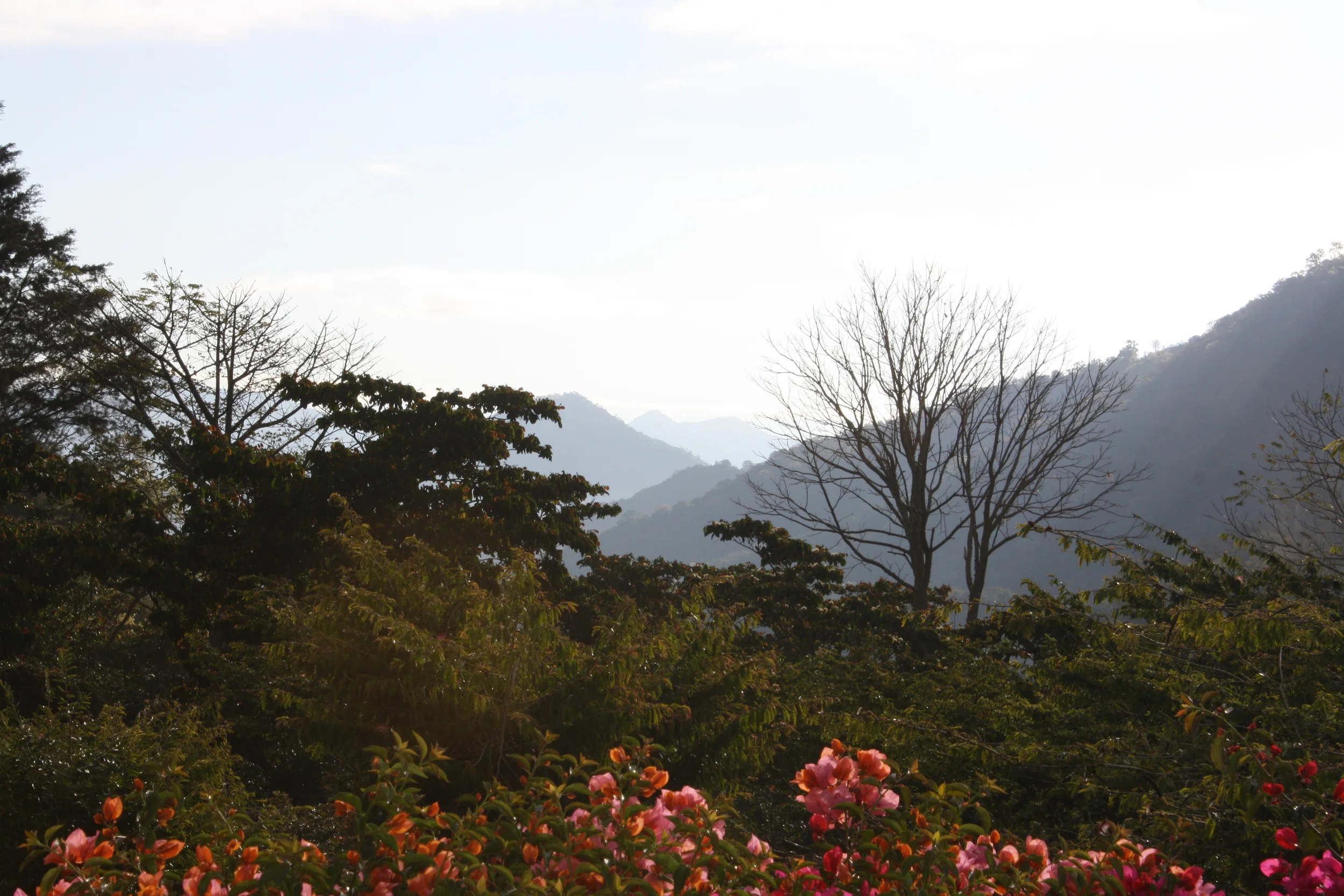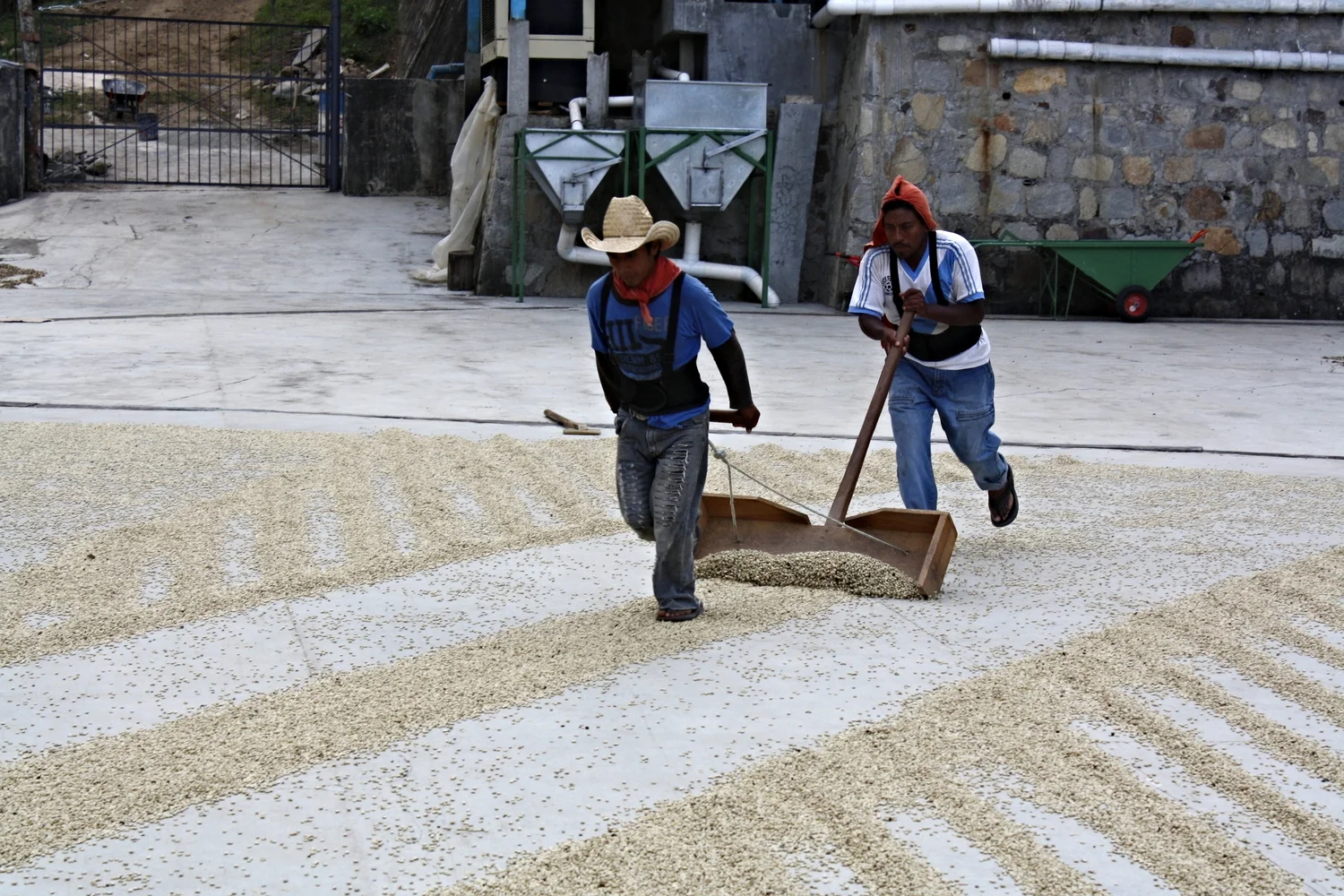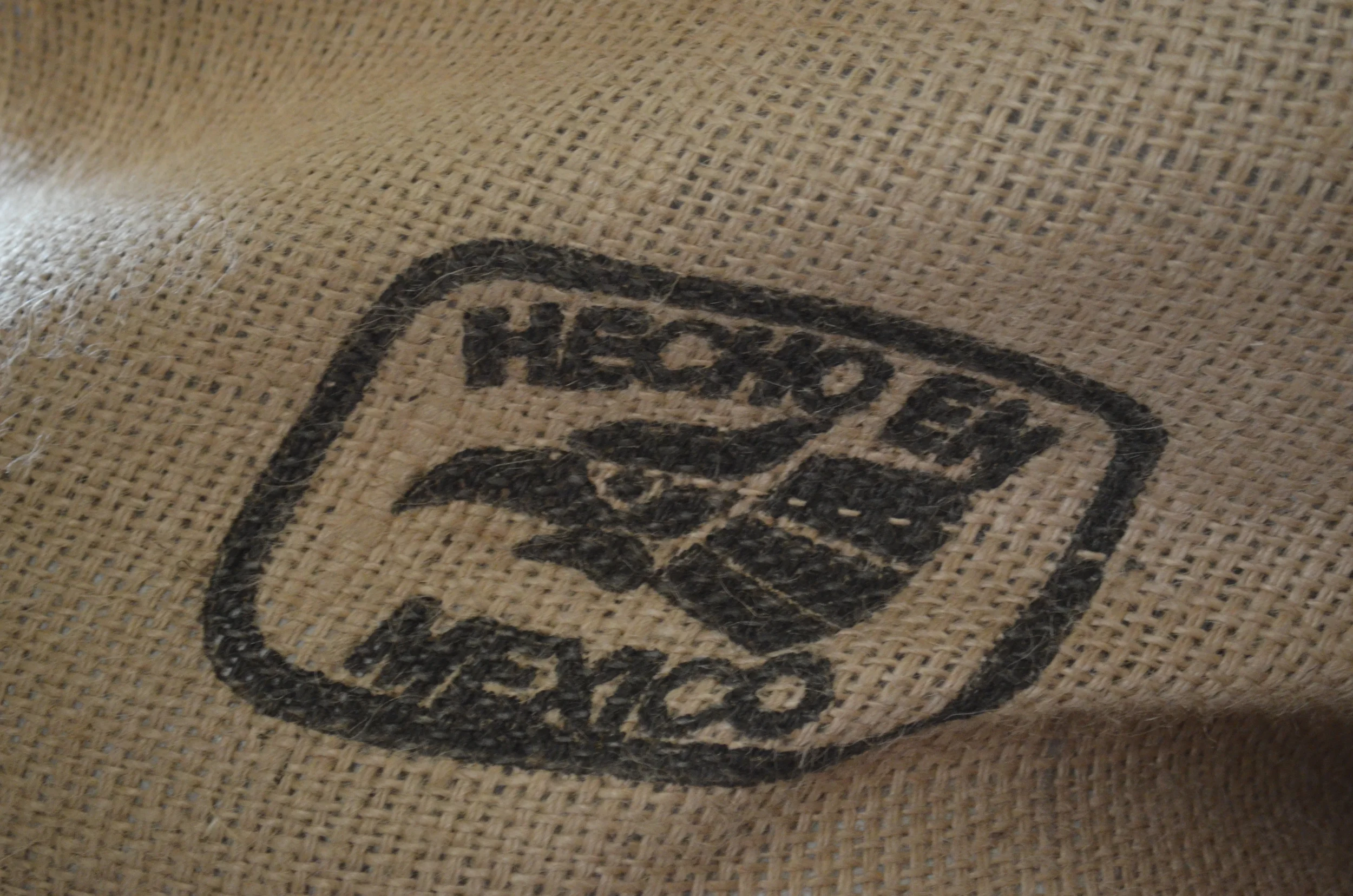
Our Process
Our highest priority in La Chilana is taking care of the environment by utilizing a sustainable coffee planting scheme.
Coffee nursery
1. Sowing
We plant our certified coffee seeds in a seedbed nursery where they are watered and taken care of. The coffee plant takes between 3 to 4 years to start producing coffee beans.
Weighing of the coffee cherries
2. Harvest
During the months of January, February, and March the coffee harvest takes. Here the coffee crop is selectively picked by hand. Only the ripe coffee cherries are picked and placed in a 70 kg sack which is carried by each picker. Once the sack is full it is taken to wet mill where the wet process takes place. Before it enters the wet process the coffee is volumetrically weighed in order to pay the pickers the right amount and maintain control of how much coffee enters the process.
Back-end of the wet process, here the coffee bean is being transferred to the patios to sun-dry
3. Wet process
The first step in the wet process is the removal of the pulp by machine pressing the cherry through a screen submerged in water (40% of the coffee cherry is pulp). Then, mucilage removal takes place. Here, what's left of the pulp (the sugars of the berry) is removed through mechanical demucilaging (scrubbing) not through fermentation. This process unlike fermentation cuts down on water use and pollution. The coffee wastewater produced in the wet process is reprocessed, at the same time the shell and mucilage are used as compost and fertilizer for sowing. Finally the coffee bean is washed and transferred to the patios. Here the coffee bean is surrounded by a silver skin and the pergamino or parchment skin.
Raking of the pergamino coffee
4. Drying
The pergamino coffee is sun-dried on concrete patios. Here the coffee is spread in rows and raked every 3 hours with wooden rakes in order to reach uniform drying.
5. Hulling
In this stage the pergamino of the coffee bean is removed leaving the green coffee bean. This is done with the help of the thresher machine which cleans.
6. Grading
The coffee beans are classified according to size and density, in three steps. The coffee bean pases through a (1) impulse taster machine, (2) a vibratory sorting machine, and (3) a densimetric classification machine. The impulse taster machine classifies the coffee by density through the use of pneumatics separating from the pile the light coffee, damaged grains, and any other remains. The vibratory sorting machine separates the coffee by size through the use of vibrating sieves. Finally the coffee is classified according to its specific gravity with the densimetric classification machine yielding the highest quality coffee beans, one fit to be sold in Europe.
7a. Packaging and Shipping
Most of our coffee beans is sold green. We package it and ship the green coffee beans with great care according to our customer specifications. We sell nationally and internationally to different roasters and cafe’s.
7b. Roasting, milling, packaging
Our coffee beans are slowly roasted to perfection in small batches by varying the temperature and the air flow, producing an aromatic coffee of superior quality and low acidity. The coffee is then grounded if requested by the customer. Finally the coffee is packaged in a bag with a one-way valve and a special seal to preserve the coffee aroma and freshness.







